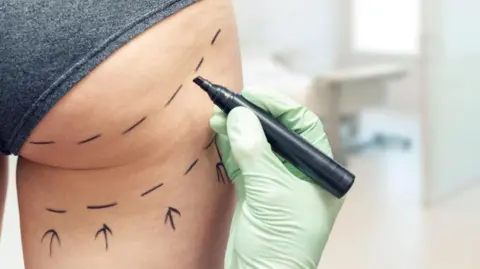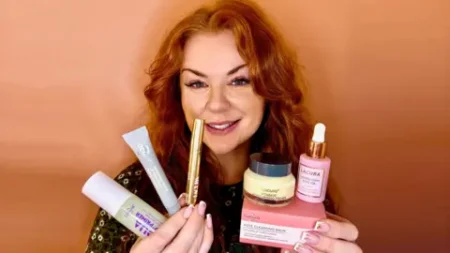In a significant move by the UK’s Advertising Standards Authority (ASA), advertisements promoting liquid Brazilian butt lifts (BBLs) from six companies have been banned. These advertisements, which primarily appeared on social media platforms like Facebook and Instagram, were criticized for trivializing the inherent dangers of cosmetic procedures and for preying on women’s insecurities regarding body image. The ASA highlighted concerns that the ads created a sense of urgency with time-limited promotions, pressuring potential clients into making hasty decisions about undergoing cosmetic procedures without adequate contemplation.
One notable advertisement attempted to attract clients by claiming it offered an “exclusive opportunity” to achieve a “perfect peachy look.” Liquid BBLs, which involve the injection of fillers to enhance the shape and size of the buttocks, have gained popularity as a non-surgical alternative to traditional fat transfer procedures. However, the ASA asserted that the portrayal of such surgeries should emphasize the need for careful consideration rather than encouraging rapid bookings based merely on promotional offers.
The ASA’s position is unequivocal: the risks associated with cosmetic surgery necessitate a more responsible representation in advertisements. Clinics advertising these services are urged to promote a narrative centered on patient safety rather than superficial outcomes. One of the ads boasted about achieving desired body shapes with phrases like “Get the curves and contours you’ve always wanted,” which the ASA deemed misleading. Another ad even stated a miraculous “0% infection rate,” a claim that the regulatory body deemed irresponsible considering the risks linked to liquid BBL procedures, including potential infections and other serious complications.
Furthermore, the ASA emphasized that marketeers must refrain from suggesting that an individual’s sense of happiness or well-being is contingent upon conforming to societal beauty standards. In light of this, the ASA has begun utilizing artificial intelligence (AI) to proactively identify and review ads that may violate advertising standards related to health and safety.
Among the companies involved, three—including Beautyjenics, Bomb Doll Aesthetics, and Ccskinlondondubai—did not respond to the ASA’s inquiries regarding the advertisements. Meanwhile, other clinics like Rejuvenate Clinics pledged compliance with ASA’s guidance, promising to retract time-sensitive offers from their marketing materials. Rejuvenate stated that they would also clarify in their advertising that procedures are carried out by qualified medical professionals, thus enhancing patient safety and reducing risks. EME Aesthetics defended its advertisements, stating that it offers thorough consultations and does not pressure clients to book procedures impulsively.
In an interesting turn, Dr. Ducu expressed a commitment to adhere to the ASA’s rules, contending that the time-limited offers were simply intended to provide consumers with a cost-effective way to access cosmetic services while promoting informed decision-making.
Additionally, a section dedicated to “Liquid BBL facts” further elucidated the potentially dangerous nature of these procedures. The facts listed that liquid BBLs come with significant health risks and require specialized skills for safe administration. The unregulated nature of the beauty industry in the UK exacerbates these risks, as many clinics administer high volumes of fillers that could lead to serious complications such as blood clots or even sepsis. The tragic case of Alice Webb, a mother of five who died following a BBL procedure, has brought the safety concerns surrounding these treatments into sharper focus.
Overall, the ASA’s prohibition on advertisements for liquid Brazilian butt lifts underscores the ongoing tension between the booming cosmetic surgery industry and the responsibility to protect consumers from misleading practices. This decision may lead to broader discussions on how cosmetic enhancements are marketed, emphasizing the importance of patient safety and welfare in a highly competitive market.











